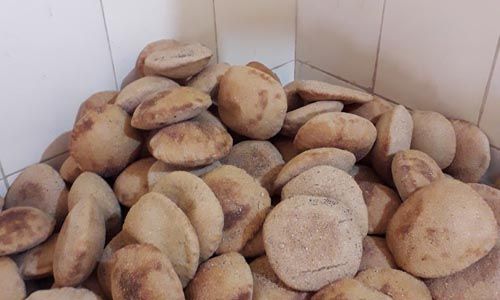Malvan town itself revolves around two narrow one-way streets, one is the gateway into town and the other leads you out that is chock-a-block with shops. An evening stroll to potter around the shops to buy kokum syrup, cashewnuts and other Malvani goodies covers the streets, and there's still time to go to the pier from which boats take off to the fort.
June 3-9, 2013
By Pushpa Iyengar
Malvan is barely 150 kms from Goa, and it has lovely beaches and they are even clean unlike many of north Goa’s beaches. In fact Sindhudurg district, which shares a border with Goa, has beaches galore – its 121 km coastline has at least 20 beaches which compares with Goa’s 21 that attract sun worshippers from far, far away.
But Malvan which gets 1,50,000 tourists annually does not have the X factor that Goa has which brought it 27,50,000 tourists last year. And while Goa got 4,75,000 foreign tourists, Malvan and even the rest of Sindhudurg district hardly gets a handful of international tourists. Chipi airport, currently being built, might make a difference in future, but Malvan is more geared for domestic tourists, largely from the rest of Maharashtra.
A walk down to the pier where boats take off for Sindhudurg fort (Rs 50 per ticket) is a lesson in profiling the domestic tourists fed on the tales of valour of Shivaji that is not only written in text books but also part of popular culture, they come here in groups to see the fort, which occupies an islet in the Arabian Sea, and is a marvel. There are large groups of joint families, there are the college goers on a 'study' tour, there are the ubiquitous couples hoping to heighten their romance in these salubrious surrounding, but what they all have in common is that they speak Marathi.
Made of steel
The story goes that Shivaji himself selected the rocky island that one can see from the shore, back in 1664. It was to keep foreign invaders as well as the Siddis of Murud-Janjira at bay. The brochures tell you that over 4000 mounds of iron were used in the casting and foundation stones were firmly laid down in lead. The construction was started on November 25, 1664. Built over a period of three years, the sea fort is spread over 48 acres with a 3 km-long rampart, and walls that are 30 feet high and 12 feet thick. The massive walls were designed to serve as a deterrent to approaching enemies and to the waves and tides of the Arabian Sea. The main entrance is concealed in such a way that no one can pinpoint it from outside.
Kokum fresh
Malvan town itself revolves around the two narrow one-way streets one is the gateway into town and the other leads you out that is chock-a-block with shops. An evening stroll to potter around the shops to buy kokum syrup, cashewnuts and other Malvani goodies covers the two streets, and there's still time to go to the pier from which boats take off to the fort. The beach here is crowded with a variety of operators that offer water sports, snorkeling and scuba diving.
If you are looking for fancy dining or a night on the town, this is not the place, although Malvani cuisine is to die for. A friend had recently come to Goa, craving for solkadi but did not get anything close to what the blog on her mobile told her it was made of. Well, it seems Malvan is where she should have gone to slake her thirst, which we did in several glassfuls of the nectar that is made of kokum and coconut juice.
And if you an early riser, a walk down to Chivla beach is recommended. You'll get a view of the sea, unhindered by humans except the odd fisherman, but don't expect a cup of coffee to sip while you drink in the sight unless you bring your own in a flask. A promenade is being built so that you have a walkway all the way from this beach, past the huge mansion of Narayan Rane (Maharashtra minister who has substantial real estate interests in Goa and whose massive cutouts along with his sons is all over this town) that perches on the corner that juts into the sea, all the way to the other beach across which is the fort.
There's a good way to develop tourism (read Kerala) and there's a clumsy way and here in Malvan, one look at the jetty and the walkway which will not win any prizes for aesthetics, they have not got it right. Clunky boulders for the walkway, a jetty that is crudely built and mars the sight of the sea is what you get. It looks like it is trying too hard and in the process losing its niche customers.
Tarkarli tally ho
Next stop is Tarkarli, which is about 7 kms away and more touristy with a slew of homestays, tourist buses, and tourists. With virtually every house along the main road that takes you to Tarkarli and then onto Devbhag, a homestay, little wonder there are about 80 of them compared to Malvan's 25 hotels that range from a lodge to a three-star hotel.
The beaches are great here and are one of the attractions. Tourists do dip their toes into the sea along this Konkan coast. A retired bank official we chatted up in one of the shops in Malvan suggested that we should stay in Devbhag, rather than Tarkarli, which is built on the confluence of the Kali river with the sea. But if you are looking for a resort that leads into the river or sea so you can kickback in a hammock and have a siesta, you have to go into one of the parallel streets where you will not get a room with a view. But like Malvan, both Devbhag and Tarkarli offer boating, snorkeling, excursions on water boats that take you for a spin on the river and sea, water scooters and nature walks. In short, these are places where you come to rest and relax in between trips to take in history.
In fact, if you are looking for a refresher course on history, then this is the neck of woods you should come to, but if its glugging chilled beer while gazing at the sea, then get back into your car and drive about 75 kms and you'll have to hit a beach shack in Goa.



